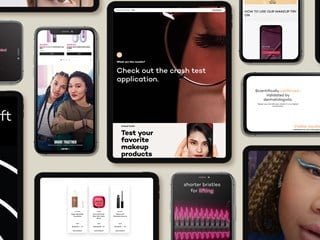setembro 07, 2017
Recently, I paid a visit to a well-known international retailer to buy a new TV set. Without talking to a sales person and within 10 minutes, I was back outside with a television under my arm (it was a small one). You see, I had already done extensive research on various websites before going to the shop. I mean, who these days makes a purchase in a shop without first doing research online?
The retail sector calls this kind of purchase the ROPO effect (research Online, Purchase Offline). Retailers agree that online makes a significant contribution to sales in physical stores. Nevertheless, they have been struggling for years with the question of how to gain insight into this ROPO effect.
Research by Forrester[1] shows that for 92% of all in-store purchases, people have previously done research online. If you consider that the total retail market was worth US$ 4.446 trillion per year[2], you start to understand the importance that C-suite executives attach to leading online visitors to physical stores. For this reason, e-commerce managers are increasingly appraised not only on direct e-commerce sales, but also on the impact of digital marketing on in-store sales.
And it’s exactly there that e-commerce managers start to become frustrated by complexity. Because how do you follow an online visitor who leaves the website and later looks around in a store and then maybe makes a purchase? How can you connect digital and offline data sources?
At Valtech, we define six separate measurement methods that can be used to make the ROPO effect visible. These methods differ in the investment required and the degree of accuracy you can expect.
1) Industry ROPO Benchmark
Several studies have been published about the ROPO effect in the retail industry. One of the most well-known studies took place at a major electronics retailer in the Netherlands. [3] Research at that company showed that 100 additional online visits led to 25 additional in-store visits. Another benchmark, from a number of international retailers, indicates that every dollar spent on online marketing (Adwords local ads) results in $8 in offline sales. [4]
Investment required 1 out of 5
Accuracy 1 out of 5
2) Soft ROPO Conversions
In addition to following industry benchmarks, you can use soft ROPO conversions to get an idea of the ROPO effect. Soft ROPO conversions are interactions that an online visitor has with a website and/or ad, and they indicate the likelihood that the online visitor will actually visit a store. For example, you can assume that a visitor who entered their postcode in the store locator, viewed opening hours and then clicked, will also visit the store. This can be measured by analysing the online behaviour data (for example, the exit rate on a store page). To do this, you need to have configured your analytics and tagging correctly.
Besides analytics, you can also explore the intention to visit a shop by using an online exit survey (using a tool like Hotjar, for example). Another form of soft conversion is the interaction of a visitor with a local ad (Google Adwords location extension), such as clicking on directions. To do this, it’s important to include all your stores in Google’s My Business and link them with Google Adwords.
Investment required 2 out of 5
Accuracy 2 out of 5
3) ROPO Experiments
Another low-effort way to measure the ROPO effect is to set up so-called ROPO experiments. For example, you could run a geo-targeting campaign involving a particular product in some regions, but not in others. This would enable you to estimate the effect of the digital campaign on in-store sales. A further possibility is to compare popular wish-list products with the sale of those products in the nearest store. For this to work, you have to have knowledge of ROPO analytics available either in-house or outsourced.
Investment required 2 out of 5
Accuracy 2 out of 5
4) Consumer panels
A fourth way of measuring ROPO is to join forces with a consumer panel such as GFK or Nielsen. These companies have extensive consumer panels that track people’s online browsing behaviour by placing a cookie and then asking them to send the shop receipt for any purchase they make. In this way, they link online behaviour with an actual purchase, offering an effective way to gain insight into the ROPO effect with little effort, though it does require some budget.
Investment required 2 out of 5
Accuracy 3 out of 5
5) Digital Marketing ROPO
In recent years, the big advertising platforms like Google and Facebook have taken big strides to give their advertisers insights into the ROPO effect. With Google Adwords Store Visits, you can measure the impact of a Google ad click on a visit to the store. For this, the user must share their location with Google. Google links this location to a store and to the ad. An anonymised sample estimates the total visits elicited by a campaign.
To use Store Visits, you must associate all your stores with Google My Business and you must have at least 100,000 Adwords clicks per month. You can also link local inventory to your ad to lure more visitors to the store via your ad. For the retailer, this means that you need to know and can show local inventory in each store. Google is still busy testing Store Visits and is working with major retailers like Sephora, Office Depot and Macy’s. Facebook has its own Store Visits functionality that works similarly to Google’s. In addition, Facebook last year launched Dynamic Ads for Retail. This enables an advertiser to geo-target relevant information, such as product availability status in the nearest store.
Google and Facebook further offer the option of tracking offline conversions. This enables you to not only look at the impact of ads on store visits, but also on actual purchases. With this, you can upload (or automatically import) offline purchase data that will then be associated with unique ad-click IDs. You can then use this data to customise your online advertising strategies to generate as many offline sales as possible.
Investment required 3 out of 5
Accuracy 3 out of 5
6) Closing the ROPO loop
With Google and Facebook, you can only measure the ROPO effect of online advertising. However, what C-suite exec or marketer doesn’t dream of being able to measure the impact of all digital channels on offline sales. This is dubbed “Closing the ROPO Loop”. To do this, you need a unique ID that can be used to connect online and offline behaviour. For example, a large Dutch bed shop chain uses the postcode that online visitors fill in as part of a quote request as a unique ID that it associates in Google Analytics with an eventual offline sale.
A loyalty card or coupon provides another unique ID. Loyalty cards are costly to administer and many retailers want to move away from them. One way is to replace them with a mobile app. Macy’s, for example, is experimenting with a mobile app that automatically checks you in when you enter the shop and then displays information, via beacons, based on your online and offline visit and buying behaviour. Now that mobile payments and the use of in-store beacons are becoming more and more common, so the step to linking real-time purchases to online data through a mobile app becomes smaller.
Investment required 5 out of 5
Accuracy 4 out of 5
Many of our clients are experimenting with these ROPO measurement methodologies. What we see is that it is not easy to map the ROPO effect accurately; it requires the right people with the right knowledge, and sufficient attention, time and perseverance. But if we succeed, the payback is massive. Closing the online offline gap is still the holy grail for retailers who want to pursue data-driven, omni-channel marketing.
[1] Forrester, comScore, Fichardt, Chad. “How to build real trust with your ecommerce customers.” Media Update. 9 April 2015. Web. 29 January 2016
[2] Internet Retailer analysis of US Commerce Department 2012-2016
[3] https://www.frankwatching.com/archive/2016/05/30/case-bcc-maakt-ropo-effect-inzichtelijk/
[4] Google Case Study: https://www.youtube.com/watch?v=UfIz0PYyucw&feature=youtu.be



